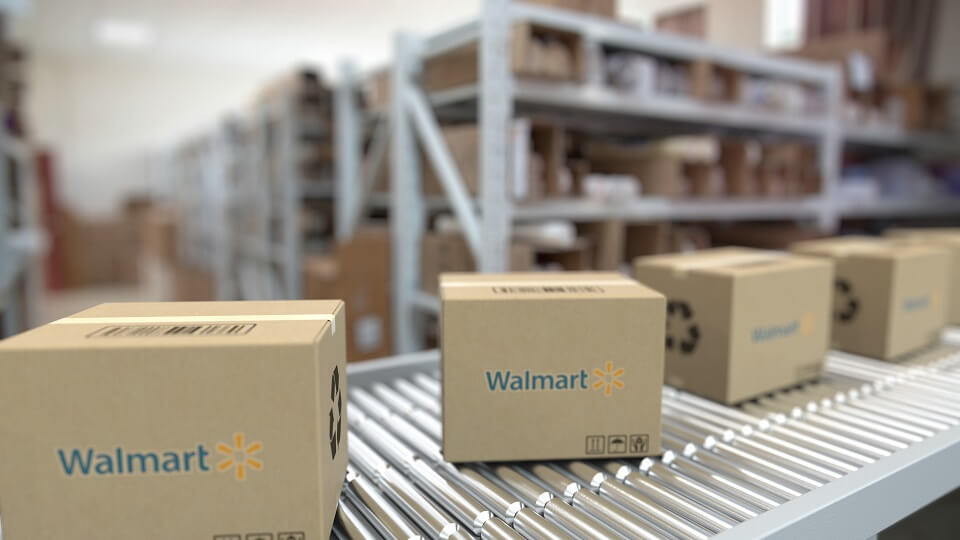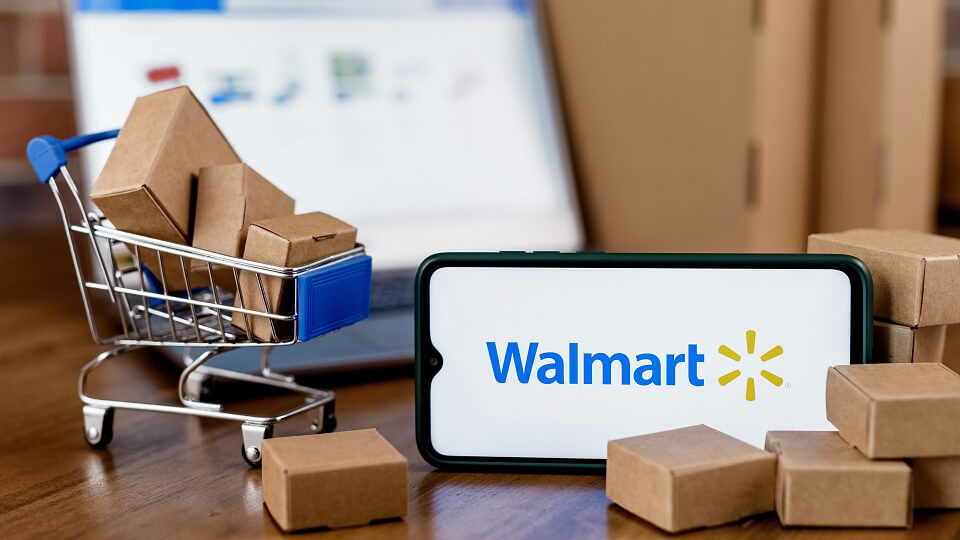For years, traditional retail stores have been grappling with the sustained impact of rapid e-commerce growth. This impact has been particularly pronounced after the onset of the pandemic, as people have increasingly turned to online shopping. From household items to groceries, electronics, and clothing, consumers now seek to find their desired products promptly. Retailers, on the other hand, need to consider a multitude of factors, from stocking products to selling them to consumers. In this process, reducing costs and enhancing revenue have become an inevitable trend in the continuous optimization of the business model.
Amid the various challenges that plague retailers, RFID technology undoubtedly emerges as the optimal solution.
Starting in 2021, Walmart has made significant strides in the expansion of RFID technology and has achieved remarkable progress by implementing RFID requirements across a wide spectrum of product categories. This single change has altered the retail landscape, generating extensive implications that have influenced thousands of manufacturers and distributors. It is anticipated that other leading retailers will soon follow in Walmart’s footsteps.
This article will elaborate on how RFID technology enables retail stores to achieve profit maximization.

Preparations Before Implementing the RFID Solution
The average cost of RFID tags has declined by about 80 percent over the last decade, while read accuracy and range have improved significantly. And, in many installations, the cost of RFID readers has fallen by as much as 50 percent over the same time period.
Careful planning and preparation are essential before introducing RFID technology, including crafting a detailed budget plan to ensure the prudent allocation of funds.
Firstly, it is crucial to identify the areas and business processes where RFID technology will be applied, such as inventory management, product display, and theft prevention. Defining the scope of technology applications aids in better planning of implementation steps.
Secondly, assess the store’s infrastructure, encompassing power supply and network coverage. RFID systems require stable power supply and reliable network connectivity to ensure proper device operation and data transmission.
Furthermore, based on business needs, select suitable RFID tags and readers. The type, size, storage capacity, and durability of tags impact system performance. Opt for tags that align with store merchandise and ensure compatibility with readers. Companies like DTBRFID are experts in the RFID application field, producing RFID tags, readers, and related equipment applicable to all retail stores. They provide comprehensive RFID project deployment solutions and subsequent services.
Lastly, choose complementary database and software systems for storing and managing data read from RFID tags, including inventory tracking, report generation, and monitoring product flow.
Deployment Steps of RFID in Retail Stores
Upon the implementation of RFID technology in retail stores, ensuring the smooth execution of the following aspects becomes pivotal to the successful establishment of an RFID system.
1. Tag Deployment
Tags form the foundation of the RFID system as they are affixed to merchandise, inventory, or other items requiring tracking. The accuracy and stability of tag deployment are crucial. Consider the following when deploying tags:
Tag Placement: Position tags appropriately on items to ensure that readers can accurately read tag information. Typically, tags are placed on the surface, packaging, or labels of items.
Tag Attachment: Ensure tags are securely attached to items to prevent detachment or damage during usage. Different types of items might require different tag types or attachment methods.
Tag Protection: Given that items can be exposed to environmental factors such as temperature and humidity, opt for durable tags or use additional protective measures like coverings or protective films.
2. Reader Installation
RFID readers are responsible for detecting tag signals and communicating with them. Installing readers involves considering the following aspects:
Position Selection: Determine reader placement based on requirements to cover the desired tag range. Placement should maximize tag signal capture.
Avoiding Interference: Refrain from placing readers in areas that could generate interference, such as proximity to large metal structures or other sources of RF signal interference.
Regular Calibration: After installation, perform calibration and testing of readers to ensure their proper functioning and accurate reading of tag information.
3. Network Connectivity
RFID systems necessitate data exchange with databases or other software systems, requiring stable network connectivity.
Network Configuration: Configure network settings to enable communication between readers and databases or related systems. This might involve tasks like IP address allocation and port configuration.
Data Transmission: Ensure stable network connectivity to facilitate real-time transmission of tag data to databases or related systems for analysis and processing.
4. Database and Software Configuration
Databases and software systems are crucial for storing, managing, and analyzing data read from RFID tags.
Database Design: Design a database structure suitable for storing RFID data. Ensure the database can store tag information, timestamps, location data, and other relevant details.
Data Storage and Processing: Set data storage policies, including data retention timeframes and archiving frequencies. Ensure the database can handle the processing of large volumes of tag data efficiently.
Software Configuration: Configure the software system to facilitate effective data exchange between readers, databases, and potentially other components. Customization might be necessary to meet specific store requirements.
Data Analysis and Reporting: Set up the system to generate reports and analyses concerning aspects like inventory, product flow, and customer behavior. Ensure the system provides valuable insights.
The aforementioned steps are critical post-RFID implementation. Proper configuration and operation significantly impact the efficiency and performance of the entire RFID system. Prior to full-scale implementation, it’s advisable to conduct small-scale tests to verify the system’s functionality and make adjustments as necessary.
Following successful testing, training staff becomes imperative. Employees need to understand how to use RFID equipment, read tag information, and manage data generated by the system. This training phase is indispensable for smooth and effective system operation.

Maximizing Profits for Retail Stores with RFID
From the perspectives of inventory management, product display and replenishment, automated payments, promotional activities, anti-theft, and security measures, let’s examine the benefits that RFID brings to retail stores in terms of profit maximization.
Inventory Management
Achieving 98%+ system-wide inventory accuracy. The advantages of RFID technology in inventory management are evident, by continuously monitoring and accurately tracking the flow of goods in and out, retail stores can avoid issues of overstocking or shortages, thus effectively reducing inventory costs. Utilizing RFID tags, stores can conduct swift and precise inventory audits, saving substantial time and human resources. This aids in optimizing inventory levels, reducing stockpile accumulation, and increasing turnover rates, thereby freeing up funds and reducing storage expenses.
Product Display and Replenishment
RFID technology enhances the efficiency of product display and replenishment. Stores can precisely track the location of products in display areas, ensuring that the most popular items occupy prominent positions. When products are purchased or relocated, the RFID system can automatically update inventory records and trigger replenishment processes. This ensures that shelves consistently feature ample stock, preventing sales interruptions and boosting revenue.
Automated Payments
RFID technology can also facilitate automated payments, providing customers with a more convenient shopping experience. Customers only need to push their shopping carts past RFID scanners, and the system automatically reads information from all tags and completes the payment process. This not only accelerates the checkout process but also reduces waiting times in queues, thereby encouraging more purchasing behavior.
Promotional Activities
RFID technology opens up more possibilities for promotional activities. By accurately tracking the sales and inventory status of each product, stores can more precisely evaluate the effectiveness of promotional campaigns. Furthermore, RFID can be employed for personalized promotional strategies, recommending promotional items based on customers’ purchase history and preferences, thereby enhancing sales conversion rates.
Anti-Theft and Security
RFID technology contributes to elevating the security and anti-theft capabilities of retail stores. Integrating RFID tags with security systems enables stores to monitor the flow of goods in real-time, detecting abnormal activities and taking appropriate measures. If someone attempts to steal items, the system triggers an alert, thereby reducing losses. Additionally, RFID can be used to thwart internal theft since all item movements are meticulously recorded.
In conclusion, RFID technology offers various avenues for retail stores to achieve profit maximization. The real-time, accuracy, and intelligence provided by RFID confer advantages that help stores enhance efficiency, increase sales, reduce costs, and offer superior shopping experiences.


















